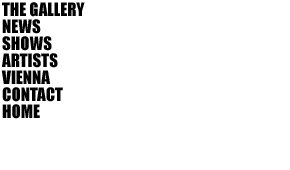
Opening: May 8, 2001, 7pm
Exhibition: May 9, 2001 to July 21, 2001
Dirk Skreber´s (G, 1961) works, even his large-scale figurative compositions, do not attempt to be representations of reality. There are no stories to be told, no hidden messages to be deciphered. Skreber’s painting delivers the grounds for a deception, postulating as its subject exactly what it will not show. The motifs convey the feeling of being ‘frozen’ in time; painting becomes a medium to show a condition, a situation of existence. The choice of subjects seems to be a lesser concern, as these are reduced to the sole function of figuring as pictorial objects, but it is not a negative reduction: It seems as if this were the only role for which they were ever intended. Therefore, it is often objects and places of everyday life - houses, cars, trains, and sports fields - that are privileged as pictorial objects.
As a strict consequence of this principle, objectivity in the new paintings is reduced. The process of painting becomes the real object. The jump from the concrete into the abstract seems a small step, creating a phenomenal constellation between realism and abstraction. The thoroughly designed play of mixed and pure colours soberly reveals that which is purely visible. Additional spills, sprays, and smears of colour bind the image back to its painterly origins, making the medium concretize into its own substance. The pure abstraction in the paintings shown here still reveals traces of their figurative origins, and is the logical final consequence of Skreber´s artistic development.
By creating environmental contexts for his works, as Skreber has done in several exhibition projects in the last few years, his painting is placed in context with other media, as, for instance, a reflection on the sculptural aspects of his work suggests. His most recent installations, as exemplified in the Hamburger Bahnhof, Berlin, are reminiscent of film sets. In this setting, Skreber developed a situation similar to construction sites, installing his paintings in three separately accessible, coarse wooden crates. Each specially illuminated crate evokes a film set, thus stimulating an emphatic, atmospherically condensed situation for the recipient.
For this exhibition, Skreber has created a new body of work, an environmental situation that includes painting. The main architectural structure is a narrow dark tunnel, which fills the main room, and is individually accessible, thus creating a claustrophobic atmosphere in a situation where recipients are virtually left alone, and have only the invisible wooden structure surrounding them for guidance. The narrow space opens into a huge black field of vision. Additionally, several architectural models document Skreber’s ongoing work with the creation of space and its atmospheric connotations. Several new large-scale paintings created specifically for this exhibition act as complementary structures for the installation.
For the presentation in Berlin, Dirk Skreber was awarded the first of the newly created, highly prized “Preis der Nationalgalerie für junge Kunst” in December 2000. His work is currently being shown at the Kunstverein Freiburg and Blum & Poe, Los Angeles.

